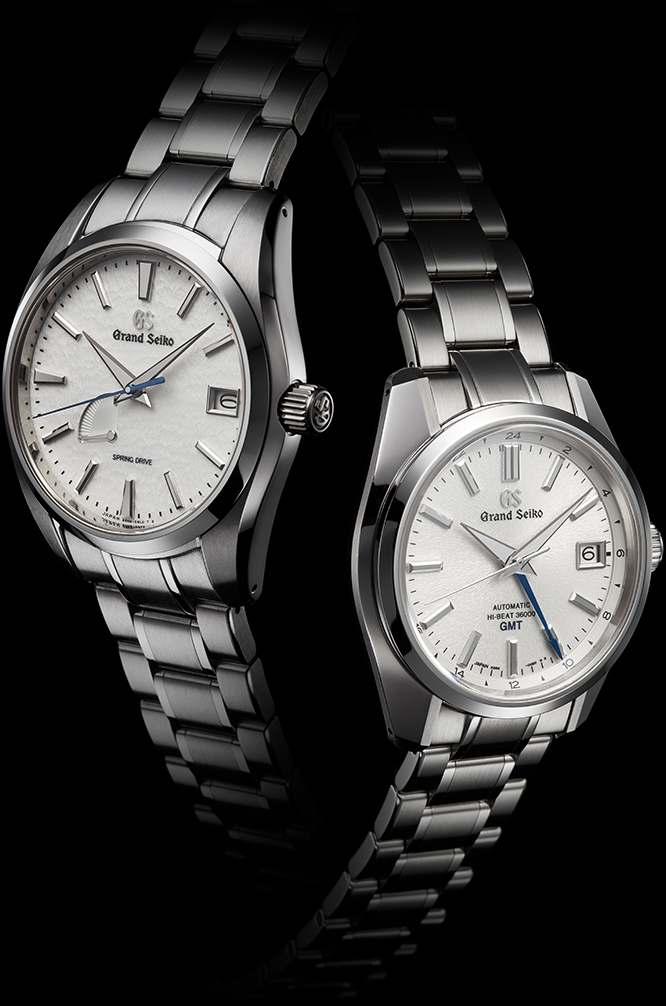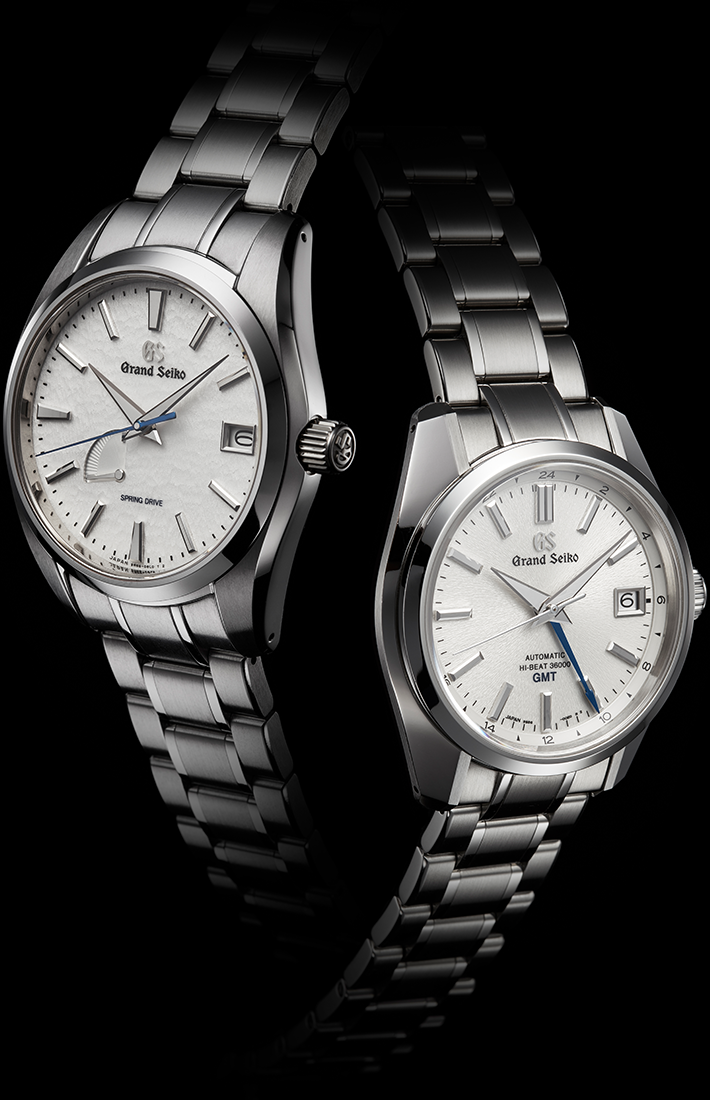Two watches that reveal their different but complementary heritages.
Spring Drive Calibre 9R65 has a power reserve of 72 hours. The blue steel seconds hand, which presents an attractive contrast to the white dial with a granular finish, was chosen to echo the blue sky spreading over the mountain range. The hour markers at the 12, 6, and 9 o'clock positions are wedge shaped for an impression of strength. The 41.0 mm case is in high-intensity titanium.
This hi-beat 36000 masterpiece is the perfect expression of the Grand Seiko Style. The case has a distortion-free mirror finish. The delicate dial makes the hands as well as the calendar more legible. The blue GMT hand stands out clearly and offers a dual time function. Automatic winding, with a 55 hour power reserve. 40.0 mm case in stainless steel.
The philosophy of Suwa Seikosha always had innovation at its heart and its pursuit of high precision in wristwatches accelerated as the company’s diversification into advanced electronics gathered pace in the 1980’s and 1990’s, a development that was reflected in the change of the company name to Seiko Epson. A clear example was Spring Drive technology, which was perfected in 1999 and has been used for Grand Seiko since 2004.
Spring Drive was a remarkable achievement, requiring advances in both traditional and electronic watchmaking that only the team in Suwa could achieve. It was a tribute to the earnest and diligent nature of the people of the Shinshu region. No wonder they wanted to incorporate the pride of Shinshu on the dial.
Seiko Instruments' original plan to make a “Mount Iwate ridge dial” was conceived in 1996. But the idea was held back for the launch of the 9S Mechanical Grand Seiko in 1998. The dial was instantly popular and came to be used in landmark models such as Grand Seiko's first mechanical movement with a 3-day power reserve.
As both of these dials require considerable skill and a long time to make, they are reserved for special Grand Seiko watches. But their very particular and detailed designs offer a glimpse into the history of Grand Seiko, which was shaped by the different cultures of the two factories and the friendly rivalry between them. Grand Seiko is a watch that speaks of the strong beliefs of its creators and their pride in their roots.


The philosophy of Suwa Seikosha always had innovation at its heart and its pursuit of high precision in wristwatches accelerated as the company’s diversification into advanced electronics gathered pace in the 1980’s and 1990’s, a development that was reflected in the change of the company name to Seiko Epson. A clear example was Spring Drive technology, which was perfected in 1999 and has been used for Grand Seiko since 2004.
Spring Drive was a remarkable achievement, requiring advances in both traditional and electronic watchmaking that only the team in Suwa could achieve. It was a tribute to the earnest and diligent nature of the people of the Shinshu region. No wonder they wanted to incorporate the pride of Shinshu on the dial.
Seiko Instruments' original plan to make a “Mount Iwate ridge dial” was conceived in 1996. But the idea was held back for the launch of the 9S Mechanical Grand Seiko in 1998. The dial was instantly popular and came to be used in landmark models such as Grand Seiko's first mechanical movement with a 3-day power reserve.
As both of these dials require considerable skill and a long time to make, they are reserved for special Grand Seiko watches. But their very particular and detailed designs offer a glimpse into the history of Grand Seiko, which was shaped by the different cultures of the two factories and the friendly rivalry between them. Grand Seiko is a watch that speaks of the strong beliefs of its creators and their pride in their roots.
